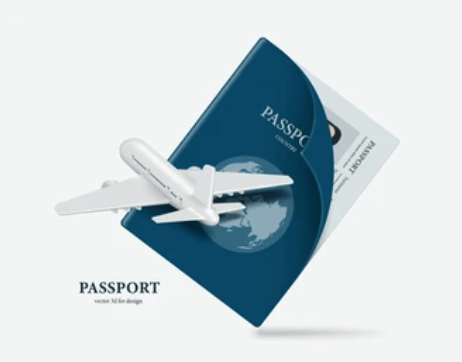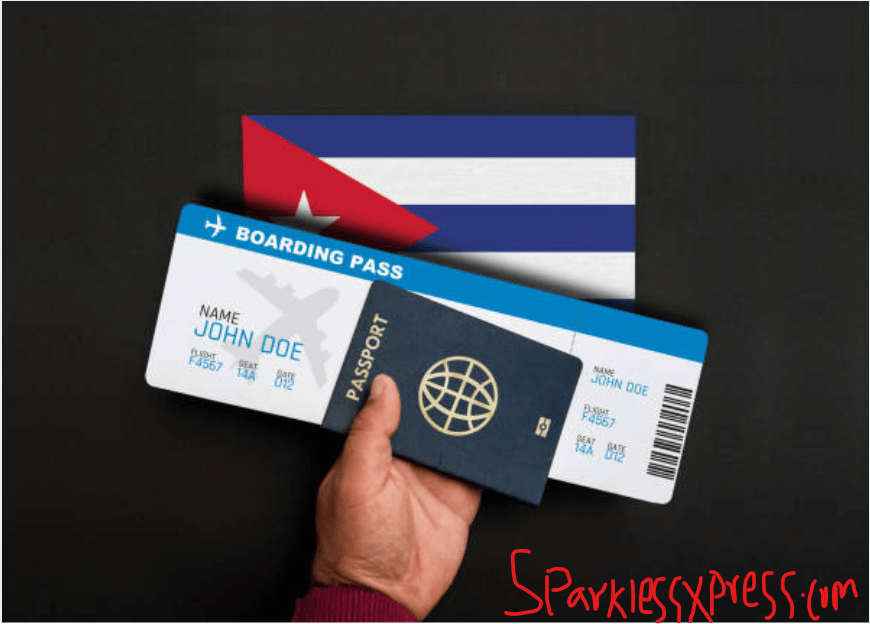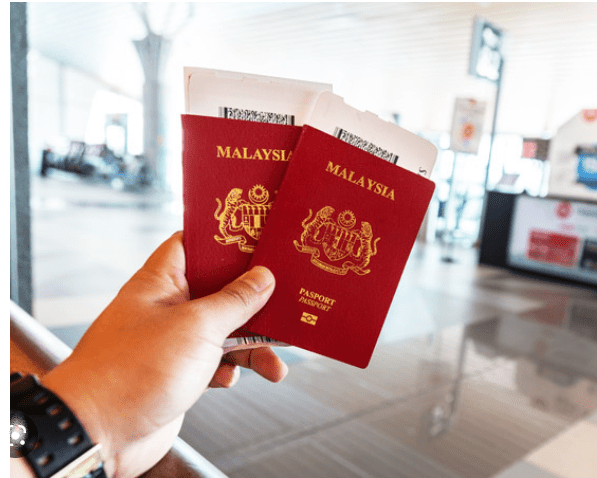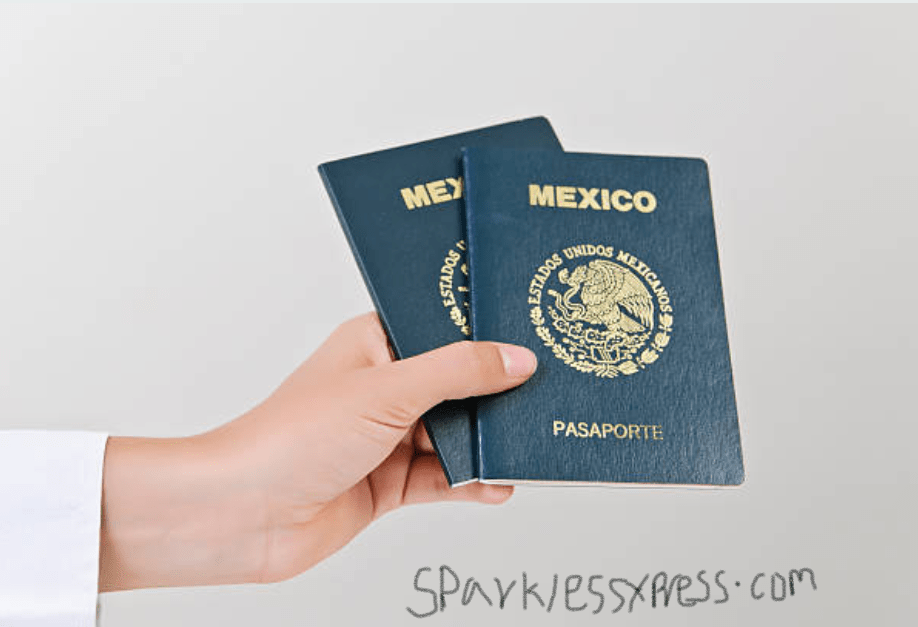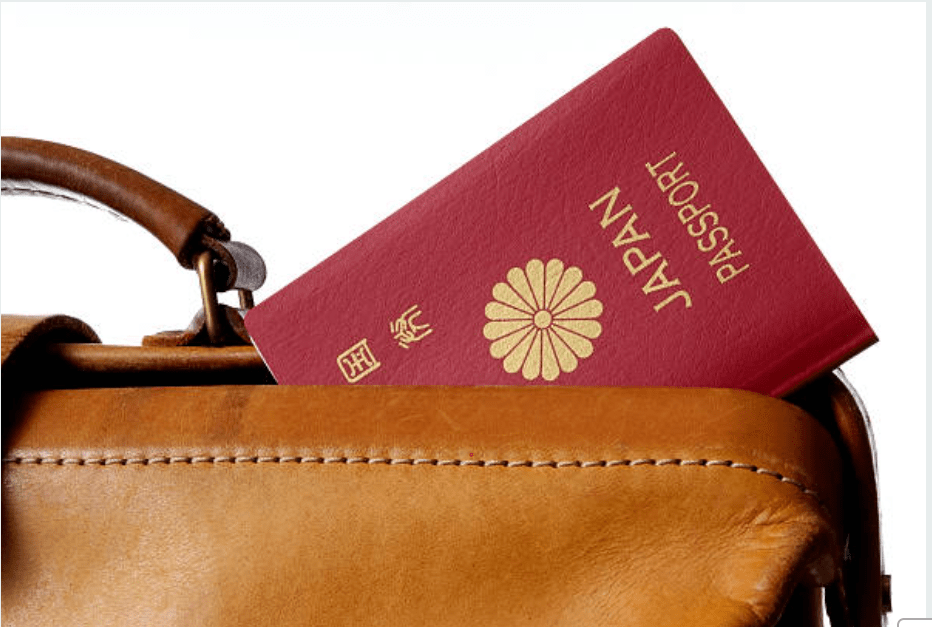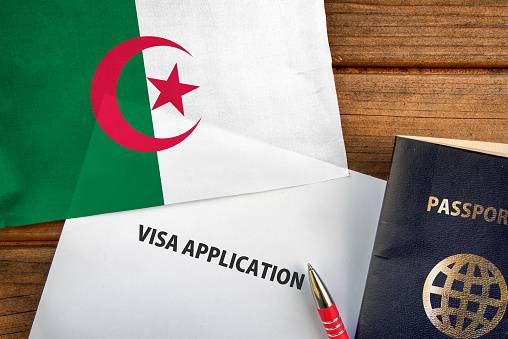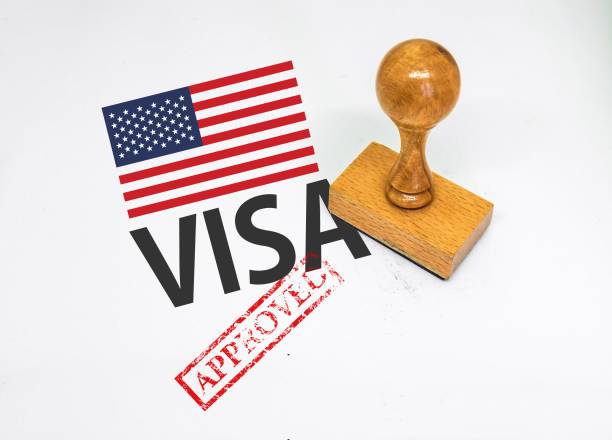Types of Visa Application – A visa is an authorization to enter another nation on legal grounds. It is a conditional authorization granted by a polity to a foreigner that allows them to enter, remain within, or leave its territory.
People travel from their country to other countries for a variety of purposes. In most cases, the type of visa that is required at each instance is determined by the purpose of travel.
This page will guide you through the different visa types and the purposes they serve to get you ready for your next trip. So let’s go!
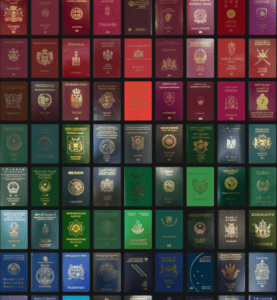
Types of Visa Applications
Some of the common visa types by the purpose of travel include:
-
Tourist Visa:
A tourist visa is an official document or stamp that authorizes an individual to travel to a foreign country for leisure and tourism. They may also be known as “travel visas,” “visas,” or “temporary stay visas” depending on the nation.
The duration of the holder’s stay in the nation of origin is frequently limited by tourist visas. This may last for a few days or several months.
Holders of tourist visas are prohibited from working or engaging in activities other than tourism during their stay. In rare instances, a short-stay visa for a specific nation may allow for more than just travel, such as business.
Tourist visas are entry permits issued for recreational purposes. Tourist types of visas are short-term, usually valid for three months, and you cannot work while on a tourist visa. There is usually no limit to how many times you can apply for a tourist visa for the same country— as long as the embassy/consulate grants the visa; you can freely travel. Many nations have now made it possible to apply for a tourist visa online. This is the quickest and most straightforward way to obtain one.
Travelers simply fill in a form using a computer or mobile device and submit the required information and supporting documents in a digital format. This makes it possible to complete a tourist visa application from one’s own home, office, or anywhere else with an internet connection.
Every country has its visa policy. This outlines the rules for which foreign nationals must have a tourist visa to enter and the requirements for applying.
In some cases, citizens of some countries may not be able to apply for a tourist visa online. In this situation, it is usually necessary to go to an embassy or consulate to apply in person.
Many sovereign states also have a list of visa-exempt nationalities who may visit for a certain length of time without having to apply for a tourist visa.
To take advantage of this visa exemption, it may be necessary to register online to obtain a waiver or travel authorization. These are not technically visas, but the application process is usually similar to electronic visas (e-Visas). They may also permit visits for other purposes, such as business or to receive medical treatment.
-
Transit Visa.
A transit visa allows travelers to pass through one foreign country and enter another temporarily.
Although it may also apply to sea or land travel, this is mostly used for air travel.
A transit visa enables temporary entry into a nation so you can switch aircraft or board a different mode of transportation to go to your next location.
If the country in question does not accept your passport for visa waivers or other online visa alternatives, these visas are frequently necessary.
A transit visa allows you to pass through a specific country while traveling to a third destination country. For example, if you have an Indian passport and you are traveling to Canada, but during your trip, you have a layover in a Schengen country, you will need a Schengen transit visa. Usually, this type of visa is issued for 24 to 96 hours, but it can also be issued for ten days up to two weeks—depending on which country you transit through. You have to apply for a transit visa before traveling; transit visas are not issued at the airport. You must apply and meet the requirements of the issuing body to be granted a transit visa.
For each nation, these regulations have different applications. Governments frequently demand that you apply online for this form of visa before flying, though. Other nations might demand that you obtain your visa ahead of time in person at an embassy or consulate close to where you live.
-
Medical Visa.
To receive medical care abroad, you might apply for a medical visa. Medical visas are only valid for the length of the procedure and the patient’s recovery period.
To qualify for this type of visa, you need to provide evidence from your doctor regarding your condition and proof that you have found a hospital and a doctor in your destination country who will perform the required procedure.
-
Working Holiday Visa.
Working holiday visas are short-term permits that can be considered a mix of tourist and work visas. The purpose of this visa is to allow you to explore a foreign country like on a holiday while working to support your trip financially. Most countries have restrictions on what type of work you can do and how many hours you can work.
Generally speaking, working holiday visas are issued for a year or two, and you can only apply for the visa once (except for Australia’s working holiday visa). To be eligible for a work and holiday visa, in most cases, you must be between the ages of 18-30.
-
Student Visa.
A student visa is a unique endorsement made in a government passport given to students registered at approved educational establishments. It does not need citizenship from the holder.
Just like in every other country, any prospective student who wants to pursue higher education in the U.S. must first acquire a student visa from that country.To allow international students to attend school within their borders, the majority of nations will provide student visas. In most circumstances, though, the student must first be registered at a post-secondary institution of higher education.
Student visas are issued for educational purposes and are usually valid for the duration of your study program. As a result, your study visa can last between one to four years, or even more, depending on your course. You cannot work in another country with a student visa unless your host country permits you. They are of varying types depending on the laws of the issuing country.
Read more on Student Visas for Studying in the U.S.
-
Work Visas.
A work visa is a permit that gives you the right to work and live in a country other than your country of residence. You have to meet several qualifying conditions to qualify for a work visa, which changes based on which country you want to work in. If you find work in a foreign country, you must apply for a work visa.
There are two main types of work visas.
Temporary work visa. This type of work visa is valid for only a few years; depending on the country, you either have to renew it or return home once it expires. Some countries may also allow you to transfer to a permanent work visa if you find a new job.
Permanent work visa. Permanent work visas allow you to live in a foreign country permanently, and after living there for a specific time, you can even apply for citizenship.
Work visas are usually issued for long-term purposes from one up to four years, but this changes depending on your work contract. Your working visa serves as a route to a permanent residence permit in most cases.
You may qualify for a work visa if you meet the following:
- You are over 18 (usually between 35-55).
- You have a work contract in a foreign country.
- You have at least three years of work experience in your field.
-
Family Reunification Visa.
A visa for family reunification is issued when your spouse lives and works in another country. This visa allows you to become a temporary (or permanent) resident in the country where your partner is working. Usually, a family visa is also issued to any minor children you or your spouse have.
A family visa is a document issued for family reunification purposes in a foreign country. Usually, to qualify for a family visa, you need to have a family member, i.e., a spouse/partner, parent, sibling, or child who is settled in a foreign country and you want to join them.
-
Investment Visa.
An immigration program is known as a “Golden Visa” enables wealthy people to obtain a residence permit or even citizenship in another nation by making a substantial donation, making an investment, or purchasing a home there. Investment possibilities vary by nation and can cost anywhere from $250,000 to millions.
You and your family members can move there legally if you make the necessary investment and apply for a Golden Visa. There, you can live, attend school, and obtain medical treatment.
An investment visa allows you to become a resident in another country if you make a significant financial investment. The required investment varies (in a startup, bonds, a government fund, etc.) but the result must be the same: a positive financial impact and/or employment opportunities. In some countries, you may also acquire a visa if you purchase real estate property.
-
Official Visa.
Official visas allow you to do diplomatic work as a representative of your country abroad.
There are two main types of official visas:
- Diplomatic visa. Diplomatic visas are issued to people doing an official visit on behalf of their country in another foreign country. Usually, diplomatic visas accompany diplomatic passport holders. Please note that you still need an official visa to enter another country even if you have a diplomatic passport.
- Courtesy visa. This type of visa is issued to people who do not qualify for a diplomatic visa but are of high status and are special guests of a foreign government (military personnel, member of the Royal family, etc.).
Persons eligible to apply for an official visa are:
- A diplomat.
- An ambassador.
- A foreign minister.
- Public officer.
- Military personnel.
- An official guest of a foreign government.
- A family member of any of the above.
Some of the most commonly issued official permits are diplomatic visas, but some countries also provide service and courtesy visas.
-
Refuge or Asylum Visa.
You can apply for a refugee or an asylum seeker visa if you are being persecuted in your home country due to religious, racial, or political reasons. A refugee visa is a legal permit that enables you to remain in a foreign nation if you are fleeing persecution there. You may be persecuted for a variety of reasons, including political or religious ones.
You can apply for a refugee visa in another country as long as you have good justifications for why you no longer feel safe in your nation. Every country issues its visa to accommodate persons who have refugee status.
-
Digital Nomad Visa.
Visas for digital nomads are authorizations that let you conduct remote work in another nation. To be eligible for this visa, you often need to work for an employer or corporation outside of your country of residence or have a business you can run from anywhere in the world.
To qualify for a digital nomad visa, you must meet the definition of a digital nomad. This definition varies depending on the country, but it’s usually someone who can work remotely either for a company or individual clients. To apply for this type of visa, you must find a country with a digital nomad immigration program.
-
Retirement Visa.
A retirement visa is issued to foreigners who want to retire outside of their home country. It is issued only to those that have reached their retirement age and is given in form of a residence permit. Usually, authorities require proof of sufficient funds to support yourself.
You are eligible to apply for a retirement visa if you meet the following conditions:
-
- You are over the age of 55 (65 in some countries).
- You have a specific monthly income (the amount varies from country to country).
- You are from a country with a retirement agreement with your destination country.
-
Pilgrimage Visa.
People who wish to complete a religious journey abroad are granted pilgrimage visas. The Hajj visa, which Saudi Arabia issues to Muslims who wish to complete the venerated pilgrimage to Mecca, is an illustration of a pilgrimage visa.
These visas are typically given to groups of individuals rather than to a single person, and they are only good for the duration of the journey.
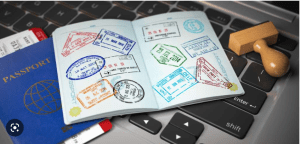
Visa-Free Travel
Not everyone requires a visa to travel. Many countries have visa-free agreements, which means they allow citizens of a select few countries to enter visa-free for short trips. Passport holders of Western countries (such as the U.S., Australia, Canada, and the EU States) can travel to most places without a visa.
The allowed time for visa-free stays is short; it ranges from a few days to a few months. Regardless of your nationality, you should check your visa requirements before traveling. Note that if you are visiting a country without a visa, you cannot work or sell any goods or services.
How To Get a Travel Visa
Travelers usually apply for a visa through one of the following ways:
- At an embassy or consulate of the country that you will visit.
- Online (electronic visa).
- At the point of entry (visa on arrival).
The method of application depends on the specific country and your nationality. You should never travel without checking your visa requirements.
Applying For a Visa at an Embassy
In most cases, you can apply for a visa at the embassy or consulate of the country you want to visit. You will have to:
- Set up a meeting.
- Gather the required documents.
- Pay a processing fee for your visa.
- Going to the visa interview (where required). Your application will be examined by the consular officials, who will then decide whether or not to grant you a visa. Your application may take a few days to many months to process, depending on the type of visa.
Applying For a Visa Online
Online visa applications are also available. Visas obtained electronically (online) are often printed out and not adhered to your passport. If a nation grants electronic visas, there will be a dedicated webpage for applications where you can:
- Fill out a visa application online.
- Include digital copies of your documents.
- Remit the visa cost.
Verify that the website you are using to apply is the official one before submitting your application because you could be required to pay a charge and/or disclose personal information.
The time it takes to learn the outcome of your visa application can range from a few minutes to a few days.
Visa on Arrival
You can apply for a visa at the airport or at another point of entry in the country you are traveling to. This is known as a visa on arrival (VOA). A visa that is issued to you when you arrive in a foreign nation is known as a visa on arrival.
Foreign nationals who require a visa to enter the country can obtain it, however, they are not required to apply before their trip. Travelers making brief stops are given access to this. With a visa on arrival, foreigners can safely enter another nation without having to apply for a visa beforehand. This aids national authorities in adequately controlling their borders.
Additionally, since you won’t need to set up your travel authorization at a foreign embassy before departure, your travel plans will be more flexible. When a visa on arrival is not possible, an online visa may be used.
In these cases, there will be visa counters at the point of entry, where you have to apply, pay a fee, and then wait for the decision to be made before you can pass through. Depending on the country, it could take from a few minutes to a few hours.
Note that all countries do not issue visas on arrival. Also, countries that issue VOAs may restrict them only to certain countries. Visas on arrival are usually only available at certain airports or entry points.
To get a visa on arrival you will need to provide evidence that you fit the requirements of entry to the country in question. Each country has its own rules on visa requirements. These also vary based on your nationality.
On a visit to a foreign nation, you may need the following documents if you need a visa on arrival:
- National passport, with 6-12 months validity remaining
- Completed visa application form
- Hotel reservation
- Proof of onward travel
- Health insurance
- Evidence of sufficient funds
In addition, you will need to pay a visa processing fee. In some countries, you may also need to provide up to three passport-sized photographs.
Possible Reasons for Visa Denial
These are some of the most common reasons why your visa application may be denied:
- Passport validity. Most countries will require you to have a valid passport with at least a three or six months validity period. However, whether this period begins when you enter or depart the country depends on your travel destination.
- Passport blank pages. The number of required blank pages on your passport differs from country to country, but it is usually two to four pages. Blank pages are required so there is enough space to stamp your passport and visa.
- Vaccination requirements. Several countries in Africa ask you to have an international vaccination certificate; otherwise, you won’t be granted a visa.
- Criminal record. It’s almost impossible to obtain a visa with a criminal record; only a few select countries, i.e., the US, and Canada, will grant a waiver for your criminal record when you need a visa.
- Travel ban. All governments have the power to declare a person “persona non grata.” As a result, diplomats and non-diplomats will not be allowed to enter a specific country.
- Inadequate health insurance coverage. In many countries, all visitors must have travel health insurance coverage.
Visa Duration and Validity
Visas can be issued for the following durations and validities:
| Short-stay | A short-stay visa can be issued for anywhere between a few days to several months. This type of visa is usually issued for tourists, business people, or other short-term purposes, like seeking medical attention or visiting family. |
| Long-stay | A long-stay visa can be issued for months or years. Sometimes, residence permits are also referred to as long-stay visas. |
| Single-entry | As the name suggests, a single-entry visa only allows you to enter that specific country or area once. After you leave, you cannot return, even if you have remaining days. |
| Multiple-entry | With a multiple-entry visa, you can enter a country or area multiple times, as long as the visa is valid. |
I trust that you do understand the kinds of visas that do exist, and how everything works. Now, start planning that trip!
